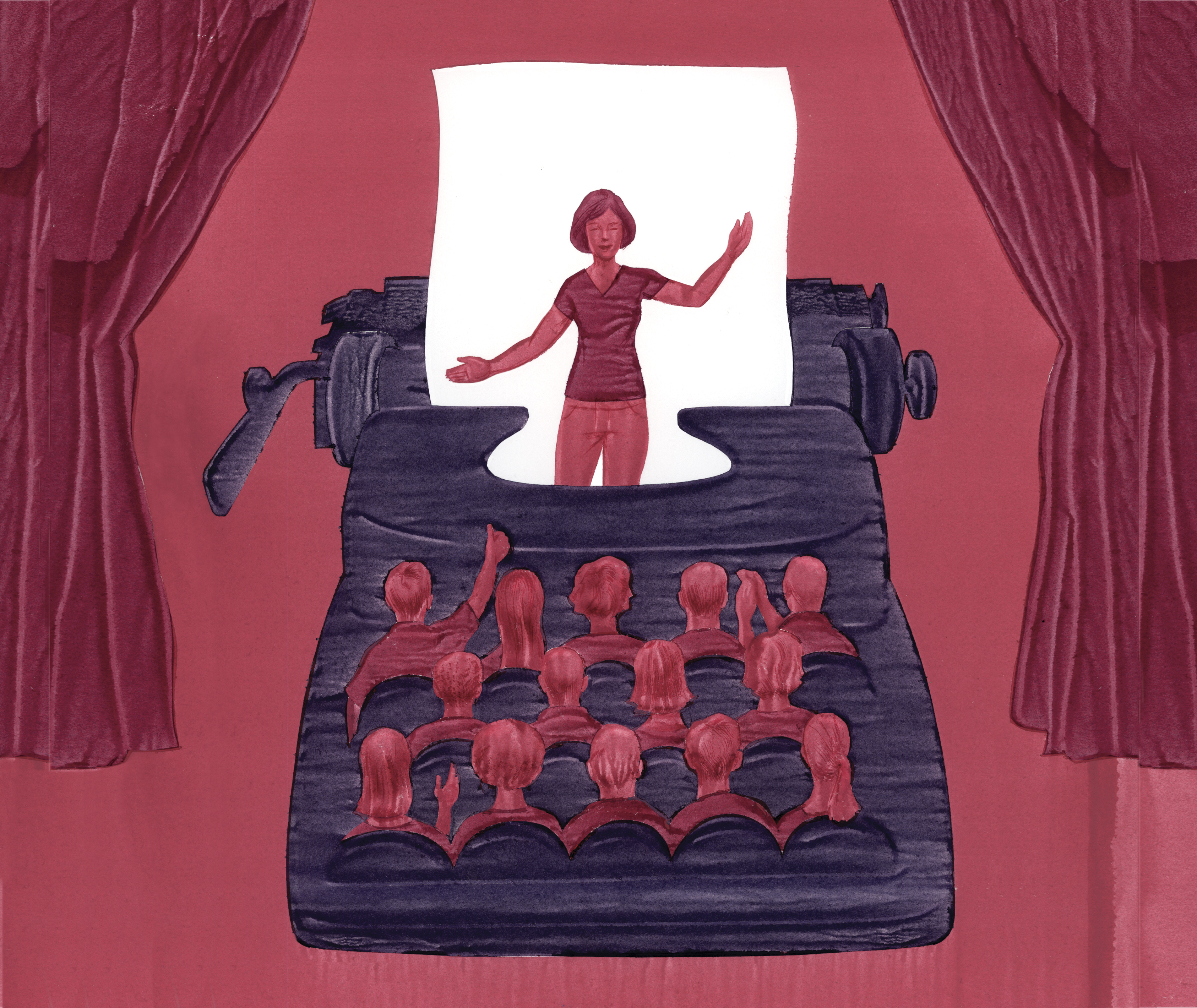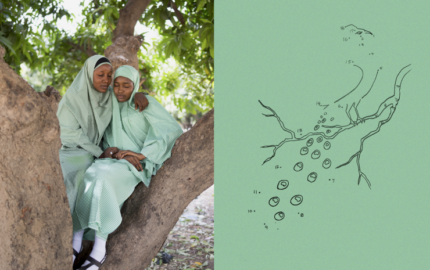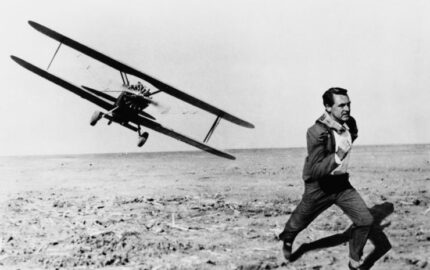In 2001, while interning at the Associated Press bureau in Rome, Samantha Gross started working as a guide, giving walking tours of the Vatican, meandering through St. Peter’s Basilica with visitors, telling them stories about the artworks around them. Over the next 10 years, Gross bounced among AP postings from Tallahassee to New York City, covering courts, city hall, politics, crime, and more. But she never lost her taste for tours.
“Probably my favorite part of the [AP] job was getting to enter into the lives of so many people whom I wouldn't have met otherwise and hear them tell their stories,” says Gross. That piece of her job, though, was the part that her readers never really got to experience. “I never felt that I was able to fully convey that to the people who would then read the stories. They were always missing out on some piece of that experience. Why couldn’t we share the best of our jobs with them?”
So last year, Gross founded StoryTour, a live, experiential magazine comprised of guided stories that take place in New York City. In one recent story, “The Land of the Slow Food Startups,” the tour guide took the audience to an old Pfizer building deep in South Williamsburg to meet the entrepreneurs behind the burgeoning slow food businesses there. “Our nonfiction story tours are like an equivalent of walking into the pages of a narrative feature in a magazine,” Gross explains. Whereas in a feature, the journalist might describe the row of tall silver machines lining the walls of the Kelvin Natural Slush Co. or the building’s bricked-up windows, in a StoryTour the audience sees all that for themselves. Once inside, they watch as the journalist interviews the staff of Dinner Lab, a pop-up dinner club, and they eat pasta made by Sfoglini, an artisanal pasta company.
The piece is more than a walking tour, according to Gross; it’s journalism that uses many of the same narrative techniques any magazine feature might. “The StoryTour begins with a narrative focusing on the seismic shifts many work-obsessed New Yorkers have faced in the wake of the economic downturn, and the ways that many people began re-examining their priorities and finding the motivation to start something new,” Gross says. Zack Silverman, founder of Kelvin Natural Slush, left behind a promising legal career to start his business. The audience hears him speak about the ups and downs of leaving a stable job to start something new and risky. They can even ask questions. “It’s not just seeing a list of places or hearing interesting facts or tasting interesting food,” Gross says. “It’s really an experience that’s guided by narrative and story.”
Instead of having people read about a business, StoryTour brings them inside it
Gross fondly recalls her experience as a tour guide in Rome. “It was thrilling to look directly into the eyes of my audience and see them react as I told them stories,” she says. “Having experienced that allowed me to envision how StoryTour could work, and how exciting it could be.”
Gross is just one of an increasing number of reporters looking to take their work beyond the paper or the screen or the speaker in the form of “live journalism.” The format is flexible, and the boundary between journalism and journalism-adjacent forms—first-person storytelling, theater, lecture—is blurry, but live storytelling events like The Moth and ideas festivals like TED could provide news organizations with viable models for moving stories from page to stage.
Outlets like The Texas Tribune and The Atlantic now put on events that bring together experts and journalists to talk about everything from higher education to national security. Pop-Up Magazine, a live show that started in San Francisco, sells out in minutes. It has also extended its brand through a partnership with TED, putting on a mini-magazine at last March’s conference. “Radiolab” has done a number of popular events; its most recent, “Apocalyptical,” ran 29 times in 21 cities and featured an original score, dinosaur puppets, and a team of multimedia projection artists. “The Heart,” a podcast about love and sex, hosts live listening events nestled in dark, pillow-padded rooms. “This American Life” also puts on live variety shows, with performances by comedians and musical acts.
And people are coming. Pop-Up Magazine’s early shows filled a 360-seat theater; today, it sells out a 2,600-person venue. “Radiolab” and “This American Life” fill theaters across the country. (“This American Life” has streamed its variety show into movie theaters.) And start-ups like StoryTour can exist on ticket sales alone. Journalism outlets are experimenting with all kinds of new formats and technologies to enhance storytelling and engage audiences. Now is a good time for the art of live storytelling.
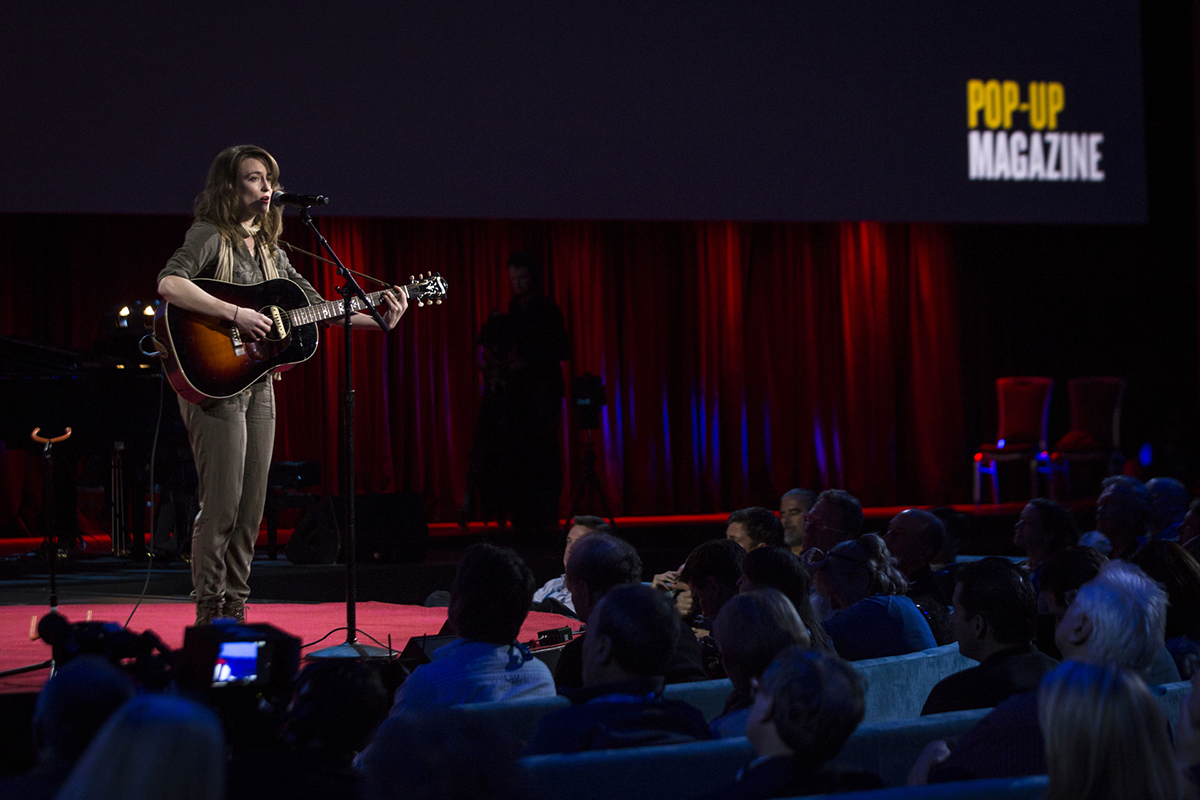
In the early 1990s, Anna Deavere Smith, whose background is in theater, explored complex political topics on stage, interviewing people involved in a series of controversial events, like Brooklyn’s Crown Heights riot in 1991 and the Los Angeles riots in 1992. She interviewed people on all sides of each conflict then edited the transcripts into monologues, playing each character herself.
In “Fires in the Mirror: Crown Heights, Brooklyn, and Other Identities,” the performance that recounted the Crown Heights riot, a three-day span in which the neighborhood’s black and Jewish communities clashed, Deavere Smith played 26 different people, from Rabbi Joseph Spielman, a spokesperson for the Lubavitch community, to an anonymous young black man who lived in the neighborhood. The televised version integrates black-and-white images of the neighborhood and a soundtrack with a mix of hip-hop and traditional Jewish chants. “You could describe Anna Deavere Smith as a documentary filmmaker who has simply decided to dispense with the camera,” wrote David Richards in a 1992 review for The New York Times.
By that definition, Pop-Up is a magazine that has simply decided to dispense with the paper. Over the past six years, Pop-Up has built a loyal (not to say, fanatical) following and has sold out shows in minutes. Its founder, magazine writer Douglas McGray, realized that he had never met the photographers who shot images for his pieces. McGray launched Pop-Up Magazine to bring together all the creative people who make a magazine and have them show their work on stage, and then go out for drinks with the audience afterward. (McGray also recently launched a print/digital publication, The California Sunday Magazine, which is inserted once a month in the Los Angeles Times, San Francisco Chronicle, and The Sacramento Bee.)
Most Pop-Up events are not recorded in any way, and that’s a big part of the appeal. “The audience is very committed,” says Pat Walters, a Pop-Up senior editor. “They buy in: ‘I’m just going to be here.’” Stories happen in the moment. As soon as they’re done, they’re gone.
In 2011, Walters produced something that highlighted what a Pop-Up experience can be. During a show produced in partnership with ESPN the Magazine, Walters made a “weird little short story, half animation, half radio story, half playful moment” about a time when record-breaking free diver Tanya Streeter nearly died.
Before beginning, Walters asked the audience to take a deep breath and hold it. They then heard from Walters that Streeter packs enough air into her lungs to fill four basketballs, and then from a scientist who studies free divers about how one’s heart rate slows down to as few as 10 beats per minute during a dive. They heard from Streeter herself about how the pressure of a deep dive bends her eardrums in. The piece also discusses how on one dive, Tanya may have suffered from nitrogen narcosis, a condition that induces disorientation and potential loss of consciousness from the effects of breathing nitrogen under pressure. During the dive she became confused and nearly didn’t make it back up to the surface.
As the audience listened, they saw a projection screen filled with Caribbean blue slowly darken, paralleling Streeter’s descent, until at the bottom, where Streeter almost died, the room went black. As Streeter recovered and rose, the blue returned. When the story ended, about four minutes later, roughly the duration of one of Streeter’s dives, Walters invited anyone still holding their breath to exhale.
In a more recent Pop-Up event, the audience enjoyed a dinner in which the elements of the meal connected to the stories they were being told. Water glasses were filled to a line that illustrated how low Lake Shasta had dipped during the drought. The napkins had word art describing “topics of conversation” for the diners. The plates were made of clay pulled up from an oil well. The dessert was made of fruits bred by a rare fruit collector. With live journalism, “the possibilities are virtually unlimited,” Walters says. “You can do everything you could do in radio, on TV, on the stage, and the people are there. You’re talking to them.”
Live shows give “Radiolab” more opportunity to improvise than when in the studio
The creative possibilities are what bring many journalists to live events. When “Radiolab” put on “Apocalyptical,” staff combined the music of Noveller with comedians like Reggie Watts and Ophira Eisenberg, and puppetry. As hosts Jad Abumrad and Robert Krulwich started a segment about the long history of scientific debate over what, exactly, took down the dinosaurs, a large dino puppet crept out onstage. “It would be so much easier, for the scientists, and for you and I right now, frankly, if we could just ask somebody who was there, an eyewitness,” Abumrad said during the show, unaware that the dinosaur is on stage, cocking its head at the audience in a distinctly bird-like way. Abumrad and Krulwich, with the help of a “dinosaur translator,” then asked the beast what exactly happened to its friends.
“What we’re trying to do is something that’s creative-feeling,” says “Radiolab” executive producer Ellen Horne. “We try to create a system where there’s a lot of reporting and facts and storytelling but there’s also this opportunity to rehearse and play.” She also says live shows allow producers and performers to improvise, something that’s much harder to do in a studio: “With ‘Apocalyptical,’ we wrote maybe 20 endings for that show. Every night we’d go out and try something new.”
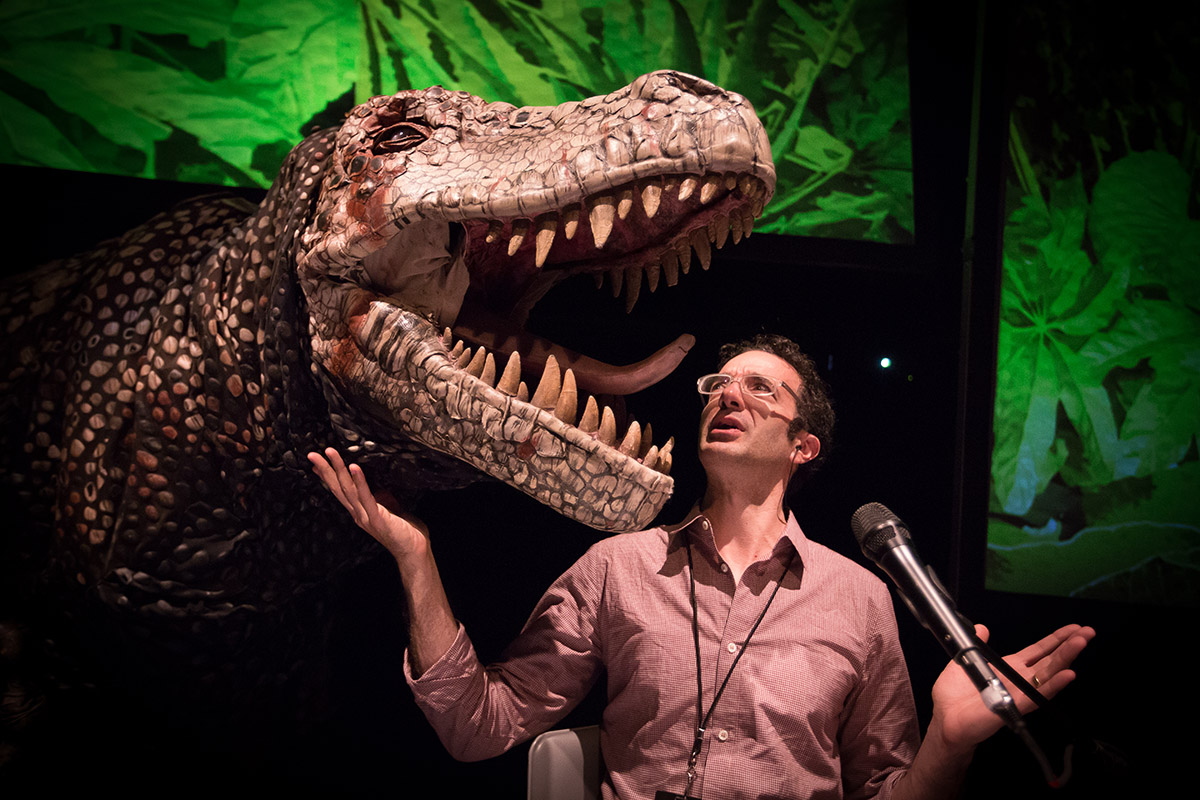
Kaitlin Prest, host and creative director of “The Heart,” came to live events looking for ways to have her work live on beyond the one-time broadcast. “How can you appreciate something culturally that is only listened to in transit?” she wonders. At one event for “The Heart,” in partnership with an experiential travel organization, seven couples travelled to an abandoned honeymooners resort in the Poconos full of heart-shaped bathtubs and round beds below mirrored ceilings. They were told to call the front desk when they arrived. When they picked up the receivers of the old phones on the bedside tables, they heard a special audio piece by “The Heart.” Other “Heart” events have included a kissing booth and the blindfolding of participants to create a new sensory experience.
“My secret goal is that every radio piece I make will live in the real world,” says Prest. She and the other producers are considering how to take their work from earbuds and speakers, listened to while closed off from the rest of the world, and make people interact with those same stories in person, together with other listeners.
The desire to bridge the gap between isolated listeners and shared space is one of the driving forces behind a new series produced by WBUR, one of Boston’s public radio stations, called “Listen Up,” which pulls together radio pieces around a theme and plays them for an audience gathered at the Institute of Contemporary Art. With the lights down, audience members hear radio stories without any visual component. They can close their eyes or look out onto the Boston Harbor through the theater’s vast windows, but there is nothing specifically designed for them to see.
The audience at the first “Listen Up” event heard the story of a woman whose family communicated with her kidnapped father in Colombia through a radio program that was broadcast into the jungle. They listened to the viral “bad haircut” story, where a reporter interviews his daughters about the terrible makeover one gave to the other. They heard Abumrad and Krulwich of “Radiolab” discuss the story behind the Golden Record sent floating out into space on the Voyager spacecraft.
The stories are all powerful celebrations of the human voice, but Lisa Tobin, senior producer of innovation at WBUR, wasn’t sure the format would work. “Asking people to focus on audio as a lone sensory experience was one of the most exciting things about it, and also the thing that terrified me,” she says. “Are they going to be bored out of their minds?” They weren’t. Tobin says audience reaction was positive enough to do another listening event, this time pegged to Valentine’s Day.
And advocacy groups are embracing the power of live events as well. In September, the California Institute for Rural Studies (CIRS), a social justice organization, will take about 100 people on a train along the Capitol Corridor Amtrak line, from Oakland to Sacramento. Along the way, riders will hear three live stories about the history of California agriculture. “We picked this neat and vibrant swath of the state,” says Ildi Carlisle-Cummins, the project director at Cal Ag Roots, a new set of programs from CIRS. “About two million people ride that route a year, and its past is full of all kinds of stories.”
One story riders will hear is of the invention of the mechanical tomato harvester, a long-running collaboration between scientists at University of California, Davis. “They were the laughing stock of UC Davis, because they had so many prototypes that failed,” Carlisle-Cummins says. But when they finally designed a machine that could pick the tomatoes, and a strain of tomatoes that were hardy enough to survive picking, they completely changed the tomato farming industry. Tens of thousands of farmers were out of work, and the university system was sued.
“I am wading into this world of putting on this storytelling project and then recording these stories because I have listened to so many episodes of The Moth and ‘Radiolab’ and ‘This American Life,’” Carlisle-Cummins says. “I just find listening to things, first-person perspectives to be really powerful and just an interesting way to go through the world.”
Live events have potential financial as well as storytelling benefits. In some cases, the events themselves make money. Pop-Up tickets generally go for $25 to $55 a pop. StoryTour’s ticket sales pay Gross’s salary, and her storytellers get paid based on a profit-sharing model. “Radiolab” breaks even on its live events. Other publications have managed to turn their events into moneymakers. According to a recent study, The Wall Street Journal’s series of live events—in which journalists interview invited guests on stage—earns over $10 million a year.
Listeners are invited to interact in real life with stories they hear on the radio
Even if the events themselves don’t make money, they can still be a net gain for the outlet. According to “Radiolab” ’s Horne, live shows are a crucial way to grow audience and foster community, which can then be monetized, if necessary. “A lot of people are brought to a ‘Radiolab’ show by a ‘Radiolab’ fan,” Horne says. “It seems to be a way that fans are able to introduce ‘Radiolab’ to people who aren’t listening to podcasts.”
The community aspect is also one of the reasons live events are so popular. “There’s been this incredible rise in all of our lives of virtual experience and virtual community,” Horne says. “One of the things that interests us in doing these live events is that it satisfies a need for the ‘Radiolab’ creative staff and the audience to have a real physical experience together. It’s almost palpable this hunger for these real experiences.”
StoryTour’s Gross agrees. When she was doing market research for her venture, she went to Moth events and asked audience members why they were there. “What almost every single one said to me was some variant on, ‘I care about these stories because I recognize a piece of myself in them.’ Which is, as writers, the reason we all think stories are important.”
Ultimately, doing a good live show is hard. Journalists often excel in their chosen medium, whether that’s print or online or radio or television, but live theater is a whole new set of skills. Reporters aren’t necessarily used to blocking things out onstage, thinking about lighting and live pacing and the set, figuring out the motions of their storytellers, the facial expressions, or working with audio and visuals and music. The arc of a print story might hinge on a quote or a phrase or a description, where the narrative of a stage show might pivot on a turned back or some other movement. Turning a story from a print or radio piece into a stage performance means learning all those skills. If done well, though, live events can bring a whole new level of interest and impact to narrative nonfiction.
“Journalism can be really effective when it actually entertains people,” says Pop-Up’s Walters, “and they don’t feel like it’s something they should be paying attention to but it’s something they want to pay attention to.”
